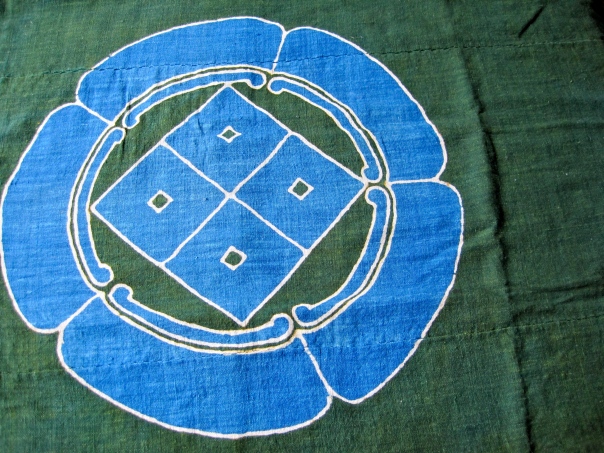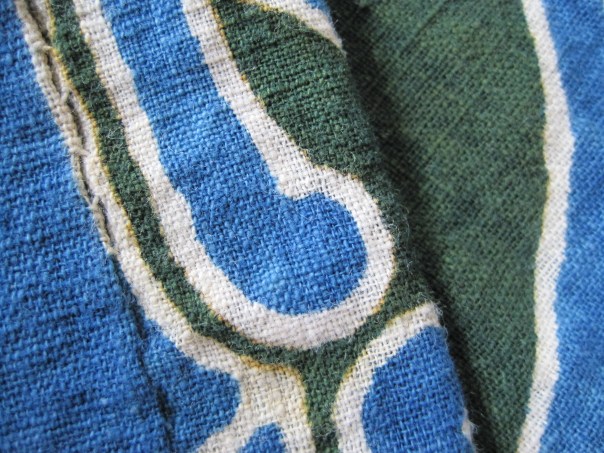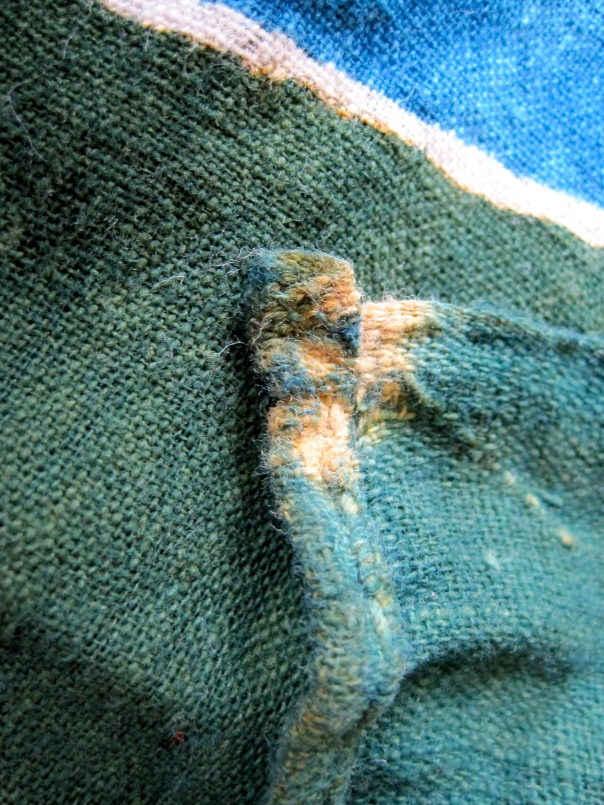

I recently found this beautiful 19th century indigo dyed fabric that was more than likely used as a furniture cover. These were traditionally made for a wedding and often display the brides family crest. The hand spun cotton thread lends texture to the fabric. The design was worked using a rice paste resist and a method known as tsutsugaki. The light blue of the family crest is known as kame nozoki, or peeking in the vat. The fabric was first dyed with a yellow dye and later over dyed with indigo to create the beautiful green color. In the close up photos you can see the yellow dye that seeped under the resist paste. The last photo shows one of the corners where the yellow dye is also visible. I would guess that the yellow was obtained from gardenia seed pods.













 This piece probably dates to the first half of the 20th century.
This piece probably dates to the first half of the 20th century.